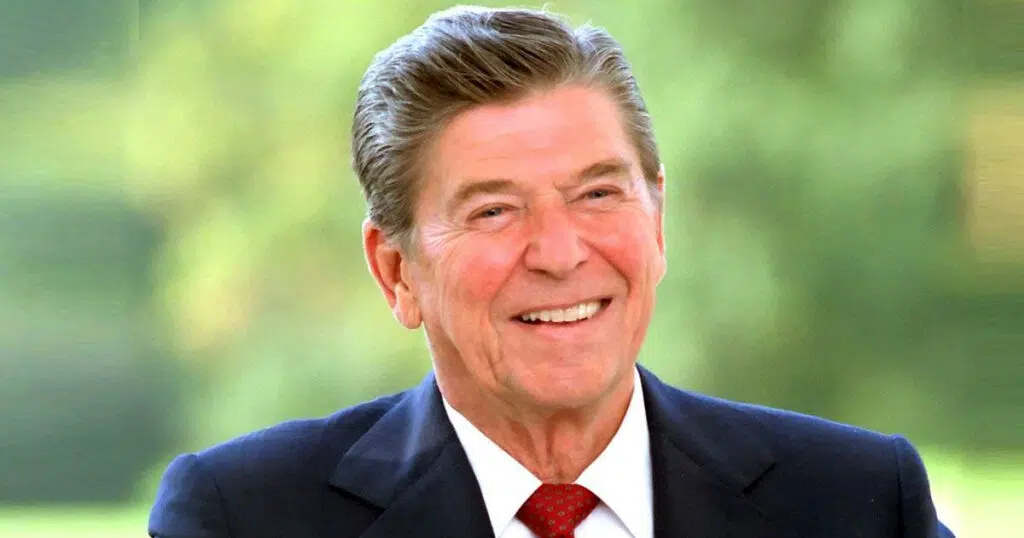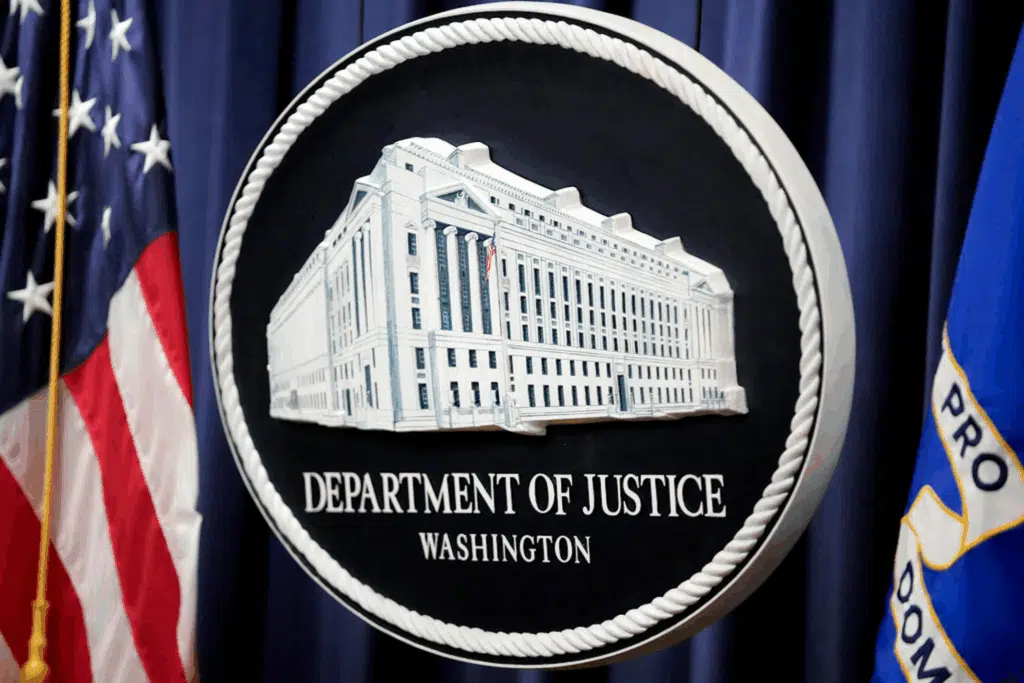
Ronald Reagan’s Lessons for the China Challenge
Despite the partisan enmities coursing through the American body politic, right and left in the United States have been converging over the last three years in their baleful assessment of the People’s Republic of China’s conduct and aims. Like the Trump administration, the Biden administration views China as an authoritarian state and strategic competitor. And, according to a growing consensus in Congress, to the detriment of American security, freedom, and prosperity, Beijing advances authoritarian norms and goals to reshape world order.
The China challenge differs in crucial respects from the Soviet challenge. To name one: The Communist Party of the Soviet Union held approximately half of Europe captive for almost five decades and specialized in exporting weapons and communist revolution around the world. In contrast, the Chinese Communist Party – notwithstanding its formidable military, its crushing of freedom in Hong Kong, and its threats to seize Taiwan – is largely content to let peoples and nations govern themselves. Instead, it uses its enormous commercial might and the lure of its vast consumer markets to snare other countries in relations of dependence and subservience.
At the same time, the Cold War-era CPSU – like today’s CCP, and consistent with the Marxist-Leninist tenets that they share – regarded itself as locked in an inexorable struggle over the shape of world order with the free, democratic, and capitalist West. Since Ronald Reagan played a decisive role in leading the United States to victory over the Soviet Union in the Cold War, it stands to reason that his diplomatic legacy offers lessons about dealing with contemporary China, another authoritarian great power driven by the communist conviction that rights-protecting democracies must be overcome.
One would be hard-pressed to find a better guide to Reagan’s foreign policy achievements than William Inboden’s recent book, “The Peacemaker: Ronald Reagan, The Cold War, and the World on the Brink.” Inboden is executive director of the Clements Center for National Security and associate professor of public policy and history at the LBJ School of Public Affairs, both at the University of Texas at Austin. His superb history of Reagan’s tumultuous eight-year presidency makes for riveting reading. In measured but lively prose, Inboden provides a blow-by-blow account of a White House buffeted by internal dissension and rocked by one geopolitical crisis after another. He also furnishes a subtle study of Reagan’s “strategic vision.”
Reagan viewed nearly all U.S. foreign policy through a Cold War lens. From China and Taiwan to Nicaragua and El Salvador, from promoting freedom, democracy, and human rights to cooperating with right-wing authoritarians, from America’s disastrous intervention in Lebanon to its well-executed operation in Grenada – his every move abroad took into consideration the global chessboard. In Reagan’s estimation – as in the Kremlin’s – the global chessboard pitted the U.S.-led free world against the communist world led by the Soviet Union.
In generous moments during Reagan’s presidency, America’s foreign policy establishment’s best and brightest – along with most scholars and journalists – derided him, in Democratic Party wise man Clark Clifford’s words, as an “amiable dunce.” In less generous but more common moments, they denounced Reagan as an ignorant warmonger liable to provoke the Soviets and ignite a nuclear conflagration.
Events vindicated Reagan. Ten months after he left office, in November 1989, Berliners dismantled the Berlin Wall. Just over two years later, in December 1991, the Soviet Union unilaterally dissolved itself.
Scholars will persist in debating how much credit for the West’s victory in the Cold War goes to Reagan (as well as his vital partners, British Prime Minister Margaret Thatcher and Pope John Paul II) and how much to the reform-minded Mikhail Gorbachev, who was named CPSU general secretary in 1985 and presided over the Soviet Union’s self-termination. The conventional wisdom allocates considerable credit to Gorbachev, though, as Inboden points out, its eighth and final leader sought to preserve the Soviet Union, not end it.
That Reagan largely assessed the Soviet challenge correctly and implemented policies that were swiftly followed by their intended outcomes bolsters the case for his statesmanship. Before being elected president – when détente, or the relaxation of tensions between the United States and the Soviet Union instituted by Nixon and Kissinger, governed U.S. foreign policy – Reagan succinctly stated his Cold War strategy: “We win, they lose.” In a March 1983 speech delivered at the annual convention of the National Association of Evangelicals, he scandalized elites by branding the Soviet Union “an evil empire” and, indeed, “the focus of evil in the modern world.”
In addition, and to the dismay of foreign policy authorities, Reagan backed the Strategic Defense Initiative. SDI envisaged a system of space-based anti-missile weapons intended to greatly diminish if not end the threat of nuclear war. The experts insisted that SDI undermined the rationale for peace and stability based on the military doctrine of “mutually assured destruction.” MAD maintained the balance of power through the shared knowledge that each side’s nuclear forces could survive a first strike and inflict a devastating retaliatory blow. By giving the United States the capability of destroying incoming Soviet missiles, the foreign policy establishment argued, SDI would destabilize superpower relations and render arms control impossible.
Fanciful and dangerous as Reagan’s project seemed to critics, we now know, according to Inboden, that fear of American progress in SDI research and development not only drove the Soviets to the negotiating table but impelled Gorbachev to move beyond arms control to reach with Reagan the first arms-reduction agreement. That agreement was eventually formalized in two treaties: START I in 1991 between the U.S. and the Soviet Union; and, in 1993, START II (which never formally entered into effect).
Not all aspects of Reagan’s Cold War strategy apply directly to the China challenge. Inboden stresses, for example, that from the outset Reagan pursued “negotiated surrender.” Such a goal makes little sense regarding the CCP. As long as Beijing’s enormous economy grows – and notwithstanding America’s increasingly energetic efforts to reduce reliance on China for critical materials, technologies, and products – America must preserve peace and order in a world in which its chief great-power rival remains not only one of its major trading partners but also that of its friends and allies.
Major features of Reagan’s diplomacy, however, are as pertinent to prevailing in strategic competition against China as they were to defeating the Soviet Union. Five stand out.
First, the U.S. must recognize, as did Reagan in the Cold War, that the China challenge involves a global battle of ideas. Accordingly, America must improve its diplomats’ and security analysts’ understanding of the CCP’s Marxist-Leninists beliefs about dictatorship and the party’s ultra-nationalist convictions about Beijing’s rightful place in the world, both of which shape the party’s interests and objectives. The U.S. also needs to enhance through educational reform its own citizens’ grasp of American constitutional principles.
Second, the U.S. must renovate its alliance system to address contemporary geopolitical imperatives. Reagan saw partners – particularly Britain, Canada, West Germany, and Japan – as crucial to prevailing in the Cold War. The same is true for meeting the China challenge. The U.S. must recalibrate alliances, share responsibilities among partners – where possible nations committed to individual freedom and democratic self-government and where necessary friendly authoritarian regimes – and reform international institutions to fashion a multi-pronged foreign policy that combines cooperation with, and constraint and deterrence of, the CCP.
Third, the U.S. must pursue “peace through strength,” blending force and diplomacy, hard and soft power, pressure and outreach. Just as Reagan persuaded the Soviets to negotiate nuclear-weapons reductions by modernizing American forces, so too must the U.S. strengthen its military to convince the CCP to join serious arms talks. To ensure military excellence, the U.S. must, as did Reagan in the 1980s, foster a thriving economy – one that grows, provides good jobs for its citizens, and leads the world in high-tech industries.
Fourth, as Reagan argued in his landmark 1982 Westminster speech – and showed in seeking freedom for Poland and human-rights protections for Soviet Jewry and other peoples and nations suffering under Soviet oppression – the U.S. has an interest consistent with its founding principles in a freer and more democratic world. That doesn’t confer a license to engage in regime change or preclude partnering with authoritarian governments that share America’s goals. It does provide the U.S. an incentive to seize opportunities to assist those who seek freedom and democracy.
Fifth, the U.S. must operate, as did Reagan’s team, with the ever-present awareness that geopolitics typically entails painful tradeoffs, tragic choices, and alternatives ranging from bad to dreadful. The guiding question for American diplomats should always be which of the imperfect options best secures U.S. freedom and prosperity.
Taking Reagan’s lessons to heart will fortify the heartening convergence between left and right concerning the China challenge.
This article was originally published by RealClearPolitics and made available via RealClearWire.



